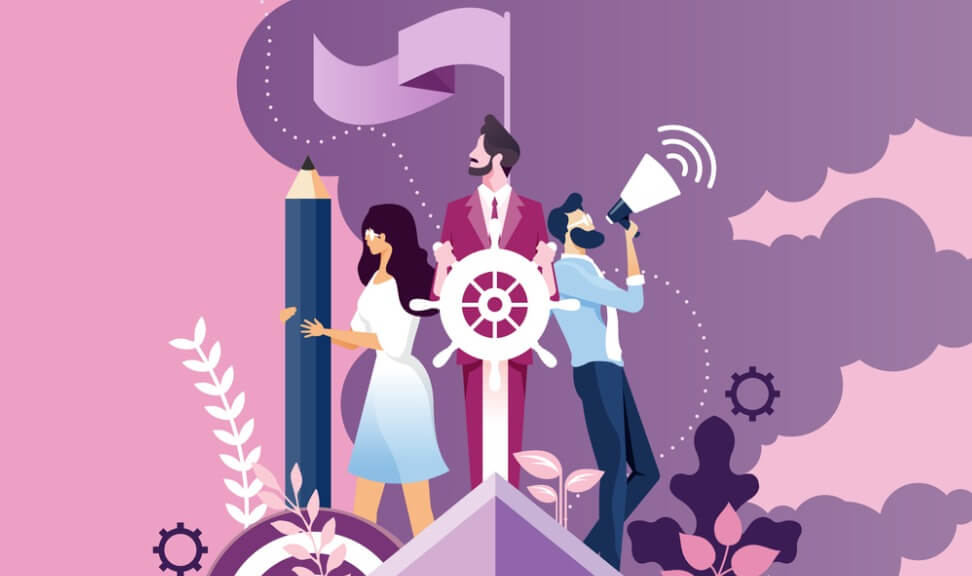The Art Of Virtually Invisible Influencing

To succeed in today’s business environment, professionals not only have to communicate and collaborate effectively but also do something else effectively: influence.
Exerting secret influence can seem counter-intuitive to relationship building, but in reality successful influencing begins and ends with relationships.
Successful influencing is virtually invisible
Successful influencing doesn’t look like influencing at all, and the best influencing doesn’t always come from where you’d expect it.
In my career, the most successful influencers are those who show exactly who they are and build relationships based on mutually positive outcomes. They are not sales people with personal agendas, they are people who want to get others on-board.
Influencing should not be seen as a skill only sales people need. Project Managers have to influence to progress their projects, creative contributors have to influence to get their ideas adopted and leaders have to influence to secure funding for their priorities.
Three areas of focus
Below are the three ways to help you build the foundation for successful influencing. By focusing on these areas, you can move towards becoming a virtually ‘invisible’ influencer.
1) Mindset
Before looking to influence outcomes, it is worth considering the nature of the relationship you have with different individuals so you can adapt your style to their preferences and the demands of your environment.
A common misconception in influencing is that our goal is to get someone to see things ‘our way’. In reality, no one can be a successful influencer while vying to get others to think they are right.
Instead, we must prepare our mindset to influence through a spirit of partnership, by establishing mutual understanding.
The best influencers go into conversations seeking to understand the other person’s point of view and use well-chosen, open-ended questions. If this doesn’t feel natural to you, ask for specific feedback from both your manager & key stakeholders on what areas of relationship building would be worthwhile to focus your efforts.
2) Capability
Your ability to influence rests on the capability to create positive interactions on the stakeholders’ terms, identify the real issues and engage in dialogue about possible solutions.
Here, your ‘talk’ is only as strong as your ‘listen’. Putting yourself in the other person’s shoes can help you discuss the topic at hand, confirming your common ground or illuminating any points of difference.
Self-awareness tools, which evaluate psychometric data and leverage personality principles, can be very helpful resources to learn more about yourself and how your behaviour is perceived by those around you.
3) Behaviour
Successful influencers are able to translate observations of their customers’ body language, verbal style, and work environment into actionable insight, to guide their interactions.
To do this, ask yourself, how does the other person like to communicate? When making decisions, do they like to receive data and analysis beforehand? Or do they like to talk through things more spontaneously? Within meetings, pay attention to the pace and content of their speech – are they speaking to think or do they need time to think before they speak?
When you’re able to understand how the other person prefers to digest information, you can adapt your style to communicate in a way that your message is more likely to be understood. By finding ways to mirror behaviour that the other person finds most comfortable, you can ensure the message doesn’t get brought down by the wrong kind of delivery style.
Influencing: soft skill, hard results
Influencing is often called a soft skill, but by adopting the right mindset, behaviours and committing to building your capabilities, you can achieve hard results that will build more effective relationships.
Realistically everyone finds some relationships at work easier than others, but by exploring why that is the case and owning any patterns in your behaviours that contribute to the relationship, you can guide yourself in techniques that improve existing relationships and unlock future ones.
Above all, when you treat your stakeholders’ agenda as your own and combine that with a solution-mindset and interpersonal mastery, the conversations flow, the relationships solidify and the act of influencing is an afterthought.
Alex Keay is head of inside sales at Insights Learning and Development.




